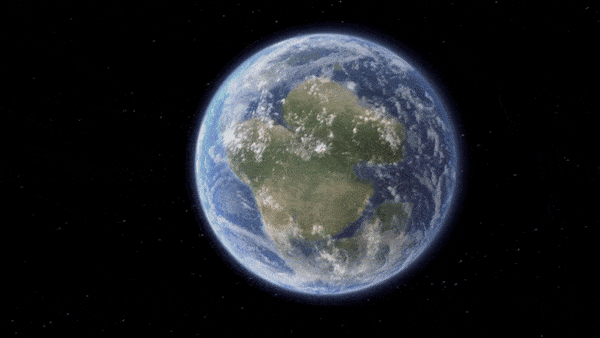When you buy through links on our site , we may earn an affiliate mission . Here ’s how it works .
Bizarre , maul fossils in Ireland were in all likelihood deformed by superheated fluids that break out from below Earth ’s incrustation around 300 million years ago . The superhot fluids were publish when the major planet ’s ancient Continent collided together to form the supercontinent Pangaea , a new study show .
The fogey , which chiefly consist of a group of amphibious - like tetrapods in the genusKeraterpeton , were discovered in 1866 trap within a layer of coal at the Jarrow Assemblage , a dodo site in County Kilkenny , southern Ireland . Keraterpetonwere palm tree - size , salamander - shape animal with pointed , dragon - like trump , according toUniversity College Corkin Ireland . The fossils date back to around 320 million old age ago during the Carboniferous period ( 359 to 299 million years ago ) .

One of the misshaped Keraterpeton fossils unearthed at the Jarrow Assemblage in Ireland. Its bones were likely warped by superheated fluids pushed up from the mantle during an ancient continental collision.
The Jarrow Assemblage fossils all share a unequalled trait : They ’ve been distort , and turgid segment of them have been interchange by the surrounding coal . This urinate it very concentrated to distinguish the fossils from their environs and secernate what the fossils originally look like . The fossils also check an remarkably gamy amount of apatite crystal , or phosphate minerals that are found in the off-white of most animals , as well as stacks of volcanic rocks .
Until now , the lead hypothesis on the misshaped fossils was that they were bury in acidulous soil , which dissolved most of the bones and enabled coal to take their blank space . However , in the young study , published Dec. 7 in the journalPaleontology , researchers analyzed the bones and discovered that the apatite within the castanets likely formed 20 million eld after the ancient amphibious aircraft conk — around the sentence when a super continental smashup was forming Pangaea .
" When we calculate at the chemistry of apatite in the bones from Jarrow we determine that this apatite was spring by het fluid within the Earth , " study co - authorGary O’Sullivan , a paleogeologist at University College Dublin in Ireland , say in astatement . These superhot fluid were in all probability released as the ancient Continent were moving around and could have transform the fossils into the warped remains we see today , he add .

Here we see an image of the supercontinent Pangaea around 300 million years ago.
Related : Earth ’s first Continent move up century of millions of age before than thought
Earth ’s continents are part of Earth ’s crust . The crust and the upper part of the mantle , or Earth ’s second level , form architectonic plate that float atop the molten rock of the middle chimneypiece . Over the last few billion age , continents have been reshape and transported across the globe as architectonic dental plate slide around , doss down into each other and overlap . At sure point in story , ancient continents have smash together to form supercontinents , such as Pangaea . This summons is recognise ascontinental drift .
The researchers ' depth psychology of the apatite within the fossils dates the crystals to around 300 million twelvemonth ago when all of Earth ’s ancient continents were smashing into eachother to createPangaea , which eventually broke apart between 195 and 170 million years ago . The squad believes that the apatite within the fossils likely come from superheated fluids that were released during this colossal coming together .

" As these Continent collided , they organize batch belts with ace - het ulterior fluid fall off them , " survey lead authorAodhán Ó Gogáin , a paleogeologist at University College Dublin , said in the argument . " It is these superheated fluids , which flow throughout Ireland , that cook and dissolve the bones of these dodo causing the change we see today . " ( A quite a little belt is a group of plenty rate that arise from the same tectonic home plate boundary . )
— Lost continent of Zealandia map in unprecedented item
— Which is the largest continent ? The small ?

— Earth spent 500 million year creating and eating dead Continent
The squad is happy to have at long last nail down the origin of the Jarrow fossils and hopes the findings can also be used to learn more about the formation of Pangaea .
" The Jarrow assemblage is of major scientific importance and is a significant element of Ireland ’s geoheritage , " study co - authorPatrick Wyse Jackson , a geologist at Trinity College Dublin , said in the statement . " It is big that ultimately the question of what altered the fossil osseous tissue of these animals has been resolved . "















